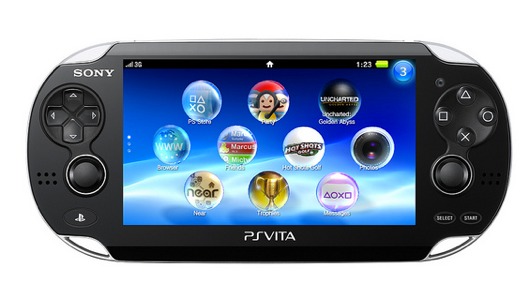
It should come as no shock that the PlayStation Vita, which is nearing its first full year of release is struggling. While there was great hype leading up to the powerful handheld’s release from an excited consumer and lots of developer support, things quickly became derailed. It’s true that the PS Vita launched at a lower price than many had anticipated but the price still remains an obstacle for a device that caters only to the hard core, due to its form factor that makes it a conscious decision to carry around, versus say your smartphone that easily slips into your pocket.
Mix that with the fact that, soon after the PS Vita’s release, Nintendo slashed the price of the 3DS by nearly half where before, it loomed much closer to the PS Vita’s price point. With Nintendo’s rich history in handhelds and now a much lower price point for the 3DS, those itching for a new portable gaming system gravitated towards the 3DS while the average consumer was satisfied with playing mobile games on their iPhone which continues to get more and more powerful with each release.
And so, the great Catch 22 had begun for Sony. While publishers were quite enthusiastic about the PS Vita which boasted a powerful processor and GPU and consumers were quite satisfied with its new UI, as sales fell, so did publisher support. Publishers of course have little reason to support a device that garners a small market share while consumers have little reason to buy a gaming console that offers only a small library of support. So nearly a year later, how can Sony break the cycle and get consumers and publishers on board again?
Simple: by offering a price cut. Now I’m not the first to suggest this and nor is this idea original. However, what many tend to miss is that prices are created based on manufacturing costs and its not as if Sony is making a $250 profit on each unit sold. In fact, for the first four to five years of its life, Sony lost a big chunk of money on each PlayStation 3 unit sold. So what has changed in the last year that would allow Sony to drop the price of the Vita?
Sony was wise to use an off the shelf processor this time around: the ARM Cortex-A9 MPCore, which is used on a host of other devices. Unlike the Cell Processor, which was exclusive to the PS3, Sony has the advantage of seeing the chips price fall much more dramatically in a years time as more devices utilize the processor, thus creating drop in its manufacturing costs as higher demand usually tends to lead to.
This formula is true for all the parts used inside of the PlayStation Vita which means its build cost will be lower today than it was a year ago. It’s worth noting though that this doesn’t mean that there is now somehow a 50% cost reduction in the PS Vita – but anything that can help chip away at the units price for Sony is needed at this point. Sony must also not be afraid of admitting what may not be working on move on from it.

While it might seem dramatic, depending on the cost associated with the Vita’s rear touch panel, Sony might want to opt to get rid of it. Yes, that means some older games will not be properly functional on the new iteration of the Vita, but so what? As of June 2012, Sony has managed to only sell 2.2 million units and even a smaller share of them probably own games that support the rear touch panel. If by getting rid of the feature, Sony can help shave costs and lower the price point to hopefully get the console in millions of more hands, so be it. In fact, Apple famously has done this, subscribing to the theory that its better to drive their platform forward, even if it means leaving some behind for the overall benefit of their ecosystem and consumers tend to be fine with it.
So what is the magical price for the PlayStation Vita? Reality would have us believe that Sony would drop each unit by $50 and offer the 4G version at $249 while the Wi-Fi only edition would be priced at $199. However, if Sony could be extra aggressive, they’d be smart to drop the Wi-Fi edition to $189, placing it right above the Nintendo 3DS. And although the price difference is only $10, Sony can get past a big mental barrier by having the Vita not cost $200.
In fact, such an aggressive price point would not only make the 3DS lower price point advantage moot, but would also place it significantly lower than the iPod Touch 32GB which starts at $299. This of course is important because the iPod Touch is single-handedly responsible for helping drive the smartphone and its casual bite size game industry to dominance. Now, the PlayStation Vita can stand tall with its arsenal of console quality games at a much lower entry price point.
For the keen readers, the 4G version of the PlayStation Vita was not a typo. More on that on How Sony Can Save the PlayStation Vita Part 2.
Discuss:
How would you cut costs in order to drive the PlayStation Vita’s price lower?

You must be logged in to post a comment.